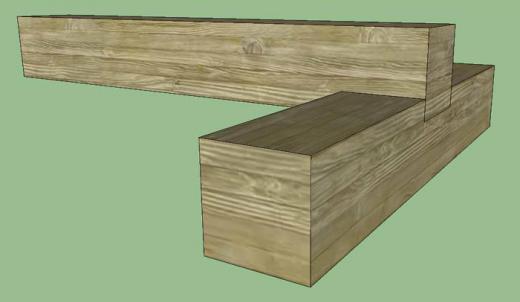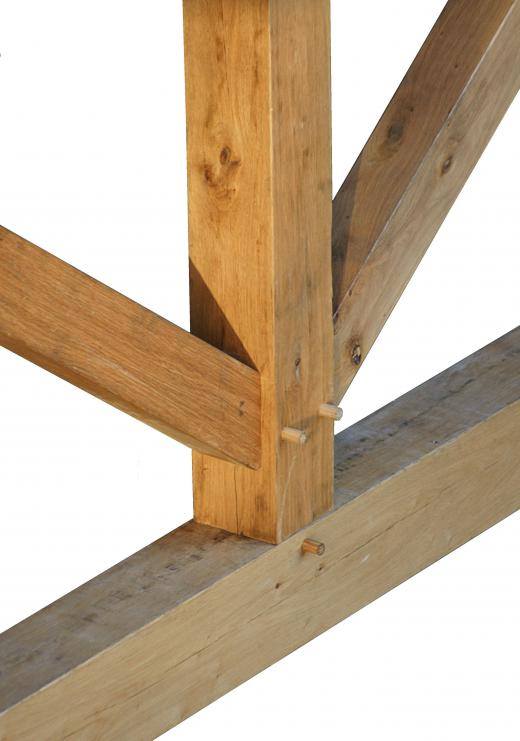Timber framing is a historic method of construction that uses lap joints or mortise and tenon joints, along with wooden pegs or dowels, to create a frame structure for a building. This construction method has been traced back to the Neolithic period of history. Also referred to as half-timbering, timber framing uses more primitive construction materials than those commonly used in stick framing. Its rugged charm and sturdy construction have made timber-framed construction a popular option for many home builders and home buyers alike.
The level of carpentry skills required for timber-framed construction is more advanced than that required for stick frame carpentry. The joints of timber-framed construction projects must fit together smoothly, so a great deal of precision in measurements and cutting is required, as well as knowledge of the characteristics of wood as it seasons, to effectively utilize timber framing as a construction method. As a trade-off for the extra time spent acquiring the necessary skills, the mortise and tenon joints of the timber-framed building will continue to hold the structure's weight long after the nails of a stick frame building have rusted away and created the need for major repairs.

In addition to using natural timbers in the construction process, the timber framing method of building might also incorporate other natural materials, such as wattle, adobe or plaster. In some cases, homes built with timber framing also incorporate brickwork as part of the structure. These other materials are used to fill the space between the timbers, but they are not load-bearing components of the design.

Timber framing can be used to add beauty and rustic charm to the interior construction of a building, or it can be employed in the traditional manner, constructing the entire building with timber framing methods. In the majority of cases, the timbers used to erect the structure will remain exposed to view. This creates the unique look that makes timber framing so easily recognizable.

Although the exterior timber framing is usually left exposed to view, in some climates, it is more desirable to use a process called weatherboarding to cover the exterior framing of the building. Exposed timbers could be damaged in some climates because of the effects of moisture and temperature variations. By installing weatherboarding, the structure is insulated against temperature and humidity variations while maintaining the intrinsic strength and durability of timber framing construction.
